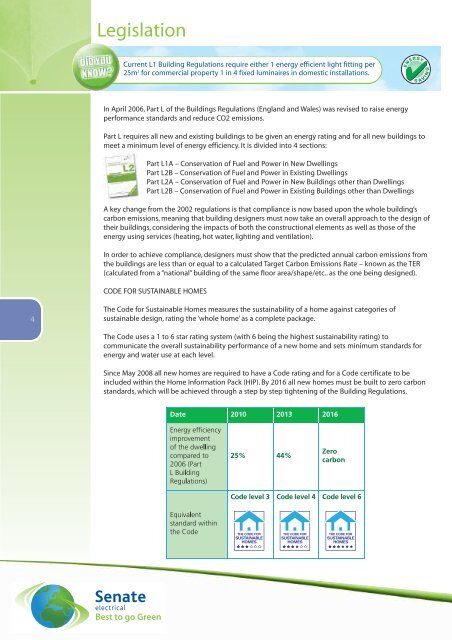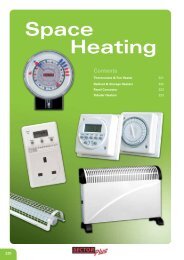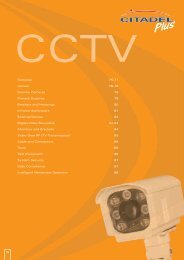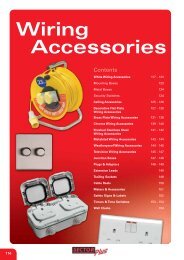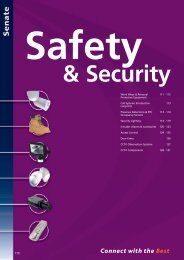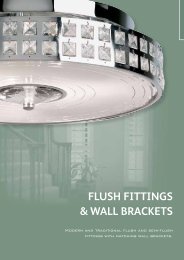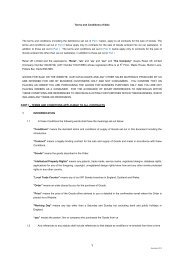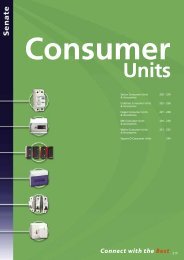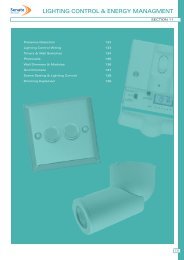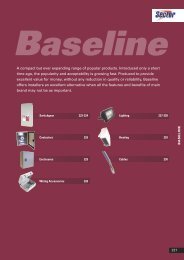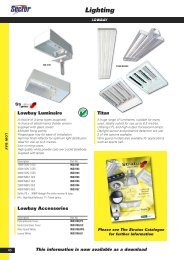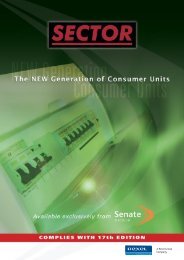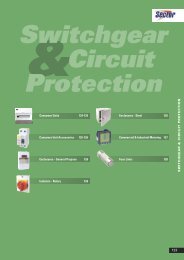View PDF (521 kb) - WF Senate
View PDF (521 kb) - WF Senate
View PDF (521 kb) - WF Senate
Create successful ePaper yourself
Turn your PDF publications into a flip-book with our unique Google optimized e-Paper software.
LegislationCurrent L1 Building Regulations require either 1 energy efficient light fitting per25m 2 for commercial property 1 in 4 fixed luminaires in domestic installations.In April 2006, Part L of the Buildings Regulations (England and Wales) was revised to raise energyperformance standards and reduce CO2 emissions.Part L requires all new and existing buildings to be given an energy rating and for all new buildings tomeet a minimum level of energy efficiency. It is divided into 4 sections:Part L1A – Conservation of Fuel and Power in New DwellingsPart L2B – Conservation of Fuel and Power in Existing DwellingsPart L2A – Conservation of Fuel and Power in New Buildings other than DwellingsPart L2B – Conservation of Fuel and Power in Existing Buildings other than DwellingsA key change from the 2002 regulations is that compliance is now based upon the whole building’scarbon emissions, meaning that building designers must now take an overall approach to the design oftheir buildings, considering the impacts of both the constructional elements as well as those of theenergy using services (heating, hot water, lighting and ventilation).In order to achieve compliance, designers must show that the predicted annual carbon emissions fromthe buildings are less than or equal to a calculated Target Carbon Emissions Rate – known as the TER(calculated from a “national” building of the same floor area/shape/etc.. as the one being designed).CODE FOR SUSTAINABLE HOMES4The Code for Sustainable Homes measures the sustainability of a home against categories ofsustainable design, rating the ‘whole home’ as a complete package.The Code uses a 1 to 6 star rating system (with 6 being the highest sustainability rating) tocommunicate the overall sustainability performance of a new home and sets minimum standards forenergy and water use at each level.Since May 2008 all new homes are required to have a Code rating and for a Code certificate to beincluded within the Home Information Pack (HIP). By 2016 all new homes must be built to zero carbonstandards, which will be achieved through a step by step tightening of the Building Regulations.


